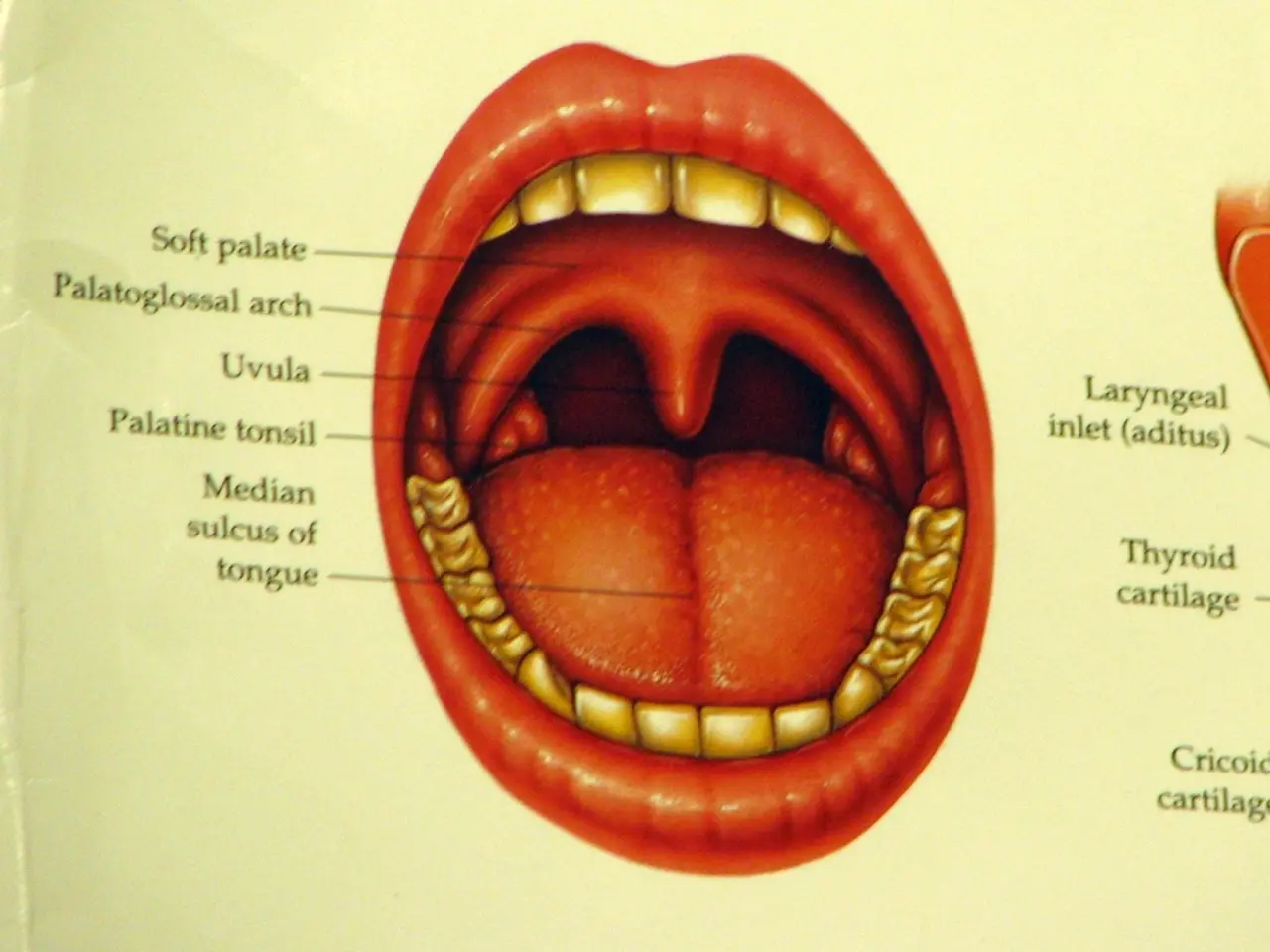Recovery process for Bell's Palsy: Identifying symptoms, understanding stages, and offering suggestions
Bell's palsy is a common condition that causes temporary facial paralysis. While most cases resolve within 3-6 months, severe cases may require a longer treatment plan.
Severity and Recovery Time
Severe cases of Bell's palsy, which may require surgery or extensive rehabilitation, can take between 6 to 12 months to recover. In some cases, residual weakness or synkinesis (involuntary movements) may persist [1].
For those who undergo ptosis correction surgery (to correct eyelid drooping), recovery involves a healing process lasting several weeks. Swelling and bruising can linger, and it may take weeks to months for the eyelid position to stabilize [4].
Rehabilitation, often including physical therapy, is recommended to help restore facial muscle function. However, it may not guarantee full recovery, and the benefits vary by case [5].
Early Treatment and Medication
Early treatment with corticosteroids, eye care, and rehabilitation can improve outcomes and reduce complications such as permanent nerve damage or eye problems [1][3]. Antiviral medications and prescription medications like oral steroids may also help improve recovery [1].
However, it's important to consult a doctor before taking over-the-counter drugs like acetaminophen or ibuprofen, as they may interact with prescription medications.
Stages of Recovery
During the paretic stage, the facial nerves begin to recover. Twitching during this stage may indicate recovery or nerve compression. In the synkinetic stage, for delayed recovery, people may experience involuntary movements and symptoms such as headaches and neck pain [2].
If no improvement is seen or the ability to close the eyes is lost after 3 weeks, it's crucial to consult a doctor. In such cases, a referral to a facial paralysis specialist may be necessary [2].
Prognosis
In most cases, Bell's palsy is a temporary condition, and recovery typically involves the gradual easing of symptoms. However, in some cases, particularly severe ones, residual impairment may occur. In extreme cases, surgical treatment, such as nerve grafts, may be necessary, which can lead to specific rehabilitation programs and longer recovery times [1][4][5].
In conclusion, while the majority of Bell's palsy cases resolve within 3-6 months, severe cases may require a longer treatment plan. Early treatment and care can significantly improve outcomes and reduce complications. Always consult a healthcare professional for advice tailored to your specific situation.
References:
[1] Mayo Clinic. (2020). Bell's palsy. Retrieved from https://www.mayoclinic.org/diseases-conditions/bells-palsy/symptoms-causes/syc-20355475
[2] NHS. (2020). Bell's palsy. Retrieved from https://www.nhs.uk/conditions/bells-palsy/
[3] American Academy of Neurology. (2020). Bell's palsy. Retrieved from https://www.aan.com/patients/disease-specific-library/bell-s-palsy
[4] Cleveland Clinic. (2020). Bell's palsy: Symptoms, diagnosis, treatment, and recovery. Retrieved from https://my.clevelandclinic.org/health/diseases/16828-bells-palsy
[5] Johns Hopkins Medicine. (2020). Bell's palsy. Retrieved from https://www.hopkinsmedicine.org/health/conditions-and-diseases/bells-palsy
Read also:
- Foods to avoid for someone with interstitial cystitis include acidic foods like citrus fruits, spicy foods, artificial sweeteners, caffeine, alcohol, and fast foods high in sodium and preservatives.
- Analysis of Ro Hair Loss Solution: Is it the Optimal Choice for Male Pattern Baldness?
- Expanded on Feline Dilated Cardiomyopathy, a Heart Condition by Sarah J. Wooten, DVM, evaluated by Emily Oliver, CVT on 07/31/2025. Published on 07/30/2023
- Gatherings for Managing Eczema Symptoms




